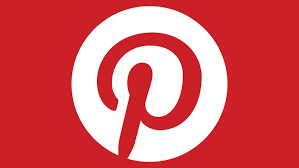Pinterest And Zoom IPOs: 5 Signs Investors Should Watch

With a spate of high profile IPOs set to debut —including Pinterest and video-conferencing firm Zoom listing Thursday— investors may be tempted to dive in.
But history suggests a second look for long-term investors. In a study of IPOs between 1980 and 2015, newly public firms on average rose 7.4% in their first year on the market, underperforming companies of a similar size which returned 11.9% in that time frame, according to Jay Ritter, a professor at the University of Florida. That trend persisted into the fifth year of a company’s public life. That said, long is the list of investors who wished they had bought Amazon or Google back when they first when public. With that in mind, here are five factors investors should keep in mind as the IPO market keeps rolling.
Ignore the first day “pop”
While a “pop” above the IPO price can be a psychological boost for investors and company insiders, it doesn’t necessarily predict the overall health of a company. In 2018 for instance, shares of companies that went public on average rose 15.7% on the first day. At the end of the year, they were together down 16.7%, according to Renaissance Capital. Even the S&P 500 outperformed the group, falling 4.4% in the year. Some observers argue that underpricing an offering to pop doesn’t make long-term sense, as the company could have raised more capital for operations had it not been chasing that jump on the first day. When Snap went public, it priced shares at $ 17, but the stock closed at $ 25 suggesting greater demand than what had been priced into the initial offering. (Of course, not all buzzed about offerings see a pop at all, as Facebook shareholders certainly know.)
Analyst recommendations matter—to a degree
When Pinterest and Zoom list, expect to see several Wall Street analysts ‘initiate coverage’ of the stock. The good news: those with early calls work for institutions that have no stake in the IPO, so in theory they have no reason to be overly positive or negative. It’s not till roughly 10 days after an IPO that analysts at the banks that underwrote an offering are allowed to go public with their recommendations (though banks have continued to stick with a 25 day waiting period). Here’s the thing: research has showed that ratings from underwriting firms tend to favor the company that just went public, which often gooses the stock when the analysis is released.
Beware lockup periods
In order to prevent too much market volatility in a stock’s early days of trading, executives and top shareholders agree not to sell shares in their firm for a set period following the IPO. For Pinterest and Zoom, that comes 180 days afterwards. Zoom also has a separate agreement with Salesforce Ventures, to which it plans to sell $ 100 million in Class A shares. Salesforce has agreed to hold onto those shares for 365 days. When the lockup periods expire, it’s not uncommon to see the stock dip as existing shareholders seek to cash in some of their holdings.
Look for earnings
The first earnings report is seen as a key moment following a large IPO. Snap’s first earnings report for example back in 2017 sent shares tumbling 23%. Quarterly earnings for all companies in the U.S. are listed 45 days following a quarter, with the exact date to be set by the firms following the IPO. For Pinterest, D.A. Davidson analyst Tom Forte says he’s looking for hints that the company will be able to monetize its international audience. Zoom, meanwhile, is already a unicorn among unicorns in that it’s profitable—but analysts will be looking to see if the company can continue to broaden profit margins.
Keep an eye on competitors
With Wall Street buzzing about Pinterest’s IPO, shares of online marketplace Etsy dipped roughly 3% on Wednesday. Part of that slide could be attributed to Pinterest, says Forte, even though the two companies are fairly different. While Pinterest operates on ad dollars, Etsy gets revenue from both ad spending and fees from listing products. But as the IPO boom of 2019 continues, investors could see more of this pricing pressure on tech companies that aren’t in direct competition, but are of a similar size (Etsy is valued at about $ 8 billion, and Pinterest at around $ 12 billion) as investors seek to cycle out of older stocks and into newer offerings.
